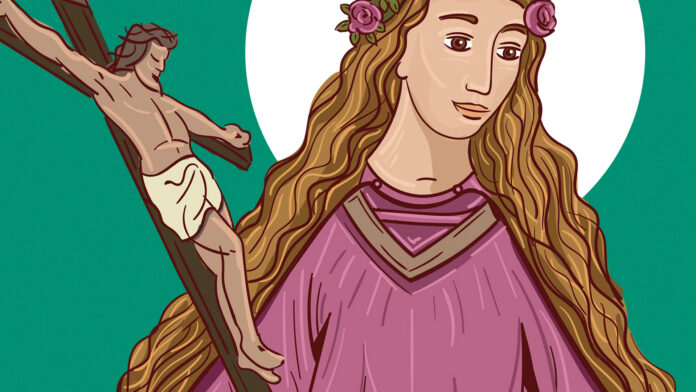Saint Liduvina – also Lidvina, Lidwina or Liduina was a Dutch mystic who lived between the last decades of the 14th century and the first decades of the 15th century.
Liduvina had a particularly special and hard life: she suffered from a serious illness that accompanied her for decades, leaving her prostrate and suffering a gradual deterioration of her physical abilities. His is believed to be the first recorded case of multiple sclerosis in history.
Despite her painful situation, Liduvina not only did not lose faith, but she took advantage of her circumstances as stepping stones to elevate her soul to God. Countless graces were granted to her by the Lord, as well as to many people through her patience, her constant prayer and, mainly, her generous heart, lover of the Lord.
The Catholic Church considers her the patron saint of those suffering from chronic diseases.
Liduvina was born in Schiedam, Gelderland (now Holland, Netherlands), on 18 April 1380, into a humble family. She suffered an accident at a very young age that severely damaged her spine. There are many reasons to think that the aftermath of the accident caused other types of ailments that, in the long run, became chronic and worsened over time.
Around the age of fifteen, Liduvina began to feel the first symptoms of the illness that would lead to her death. These soon forced her to live bedridden. It was also during this time, when hearing the voice of God within her, she accepted her situation and began to make her suffering an offering of love to the Father for the salvation of men, especially for who live in constant sin. In this she discovered a true vocation, a path to be fruitful and not lose herself, uniting herself with the Passion and Death of Christ.
Liduvina also went through long periods of sadness that led her to question how God might have allowed her to be in that state. One day she met the new parish priest of her town, a holy priest, Father Pott, who taught her that God always “loves his children the most who suffer the most.” Father Pott gave her a crucifix and asked her to constantly remember that Jesus was on the cross, and to look at herself through that “mirror,” because he was convinced that “suffering could lead her to holiness.”
After a time of anguish and pain, Liduvina began to meditate on the Most Holy Passion of the Lord, and asked Him to give her courage and love to suffer for the conversion of sinners and the salvation of souls, following His example.
When he turned 38, the episodes began marked by pain throughout his body, from head to toe – in addition, the first signs of what would later become an extensive sore on his back appeared. But, by then, Liduvina had already conquered a serene joy and a silent peace, knowing that she was loved at all times by the Good Jesus. In the last years of her life, given the difficulty in swallowing food, Holy Communion became her only support, as certified by a document from 1421, signed by the civil authorities of Schiedam twelve years before the death of her.
It is increasingly difficult to see Catholic news on social media. Subscribe to our free channels today:
God granted Saint Liduvina very special gifts: on occasion, she predicted future situations and many sick people for whom she prayed were cured. At times she fell into ecstasy and God granted her the vision of celestial realities.
On 14 April 1433, Easter Day, the saint was in prayer when she had a vision of Christ administering to her the Sacrament of the Anointing of the Sick. A few minutes after bearing witness to what she had seen, she expired. The last thing she managed to ask, with great difficulty, was that her house be converted into a hospital for the poor.
Shortly after his death, his tomb would become a place of pilgrimage, and a year later a chapel began to be built over it.
The Franciscan priest Joannes Brugmann and the Augustinian canon Thomas of Kempis told the story of Saint Liduvina’s life and spread her devotion. In 1615 her relics were transferred to Brussels, although in 1871 they were taken back to Schiedam. On 14 March 14, 1890, she was canonized by Pope Leo XIII. Her feast day is celebrated on 14 April.



